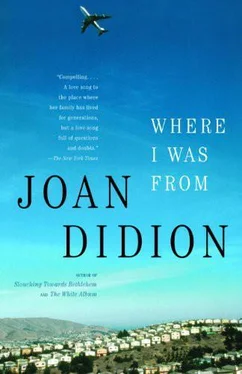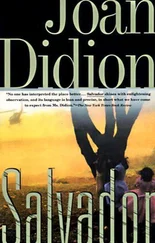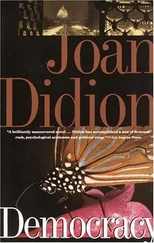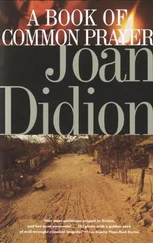1 ...7 8 9 11 12 13 ...38 Jane Hollister Wheelwright’s sense of her entitlement seems, in The Ranch Papers , more layered than that of many inheritors, more complicated, even tortured. The Hollisters, she concludes, “had been given a chance to live a part of history, to experience an era virtually extinct elsewhere in California.” She remains reluctant to confront the contradictions in that history. Her idea of what the land meant remains heightened, and in the familiar way. She mentions in passing that the ranch supported “a large herd of white-faced Hereford cattle,” but offers no sense of a working cattle operation. She sees her father as “one of the last of the gentlemen cattlemen of the era of large family ranches in California.” She tells us that she and her twin brother “had grown up in a trance, like sleepwalkers, muffled by the land’s huge embrace,” and accompanies a photograph of herself at twenty with an apparently meaningful quotation from Aldo Leopold’s A Sand County Almanac: “There are two kinds of people: those who can live without wild things and those who cannot.”
Yet she seems to have quite deliberately chosen, at age twenty-four, to live without wild things: she married a psychiatrist, Joseph Wheelwright, was herself analyzed by Carl Jung, became a lay analyst, gave birth to a daughter in China and a son in London, and returned to California with her husband to found, in 1943 in San Francisco, the world’s first Jungian training center. The description she gives of her 1961 return to the ranch is suggestive. All such returns, she tells us, involved a learned process of “reaching into the mood of the place,” of shedding “city demands.” She had come to understand the necessity of cultivating “calming” through “the monotony of walking,” of encouraging the accelerated onset of what others might call by other names but she called “the big letdown”: “Our coast requires a descent always. For those new to the place the letdown is more often experienced as an unpleasant locked-in feeling, an immobilizing depression.”
What we seem to have here, then, is a story of an acquisitive grandfather, a father who retreated into the huge holding that allowed him to play El Patrón (even the daughter who reveres him mentions, in the guise of a virtue, “his power of passivity”), and a daughter, Jane Hollister, who ran guiltily for daylight. It was nonetheless Jane Hollister Wheelwright, not her brothers or cousins, who inherited from the father in 1961 the power to vote more than half the shares in the ranches. “My father must have known that I was as stubborn as he and would try to tackle the problems; and as the only woman I would be outside male competition,” she wrote in The Ranch Papers. “But the outrage it caused only compounded the existing situation, and so the struggle began amongst the seven of us.” That the nature of this struggle is not described in The Ranch Papers is a telling lacuna. It would appear to have focused, since the need to sell was a given, on the terms of the sale: to whom, for how much, in return for what contingent agreements. One senses that the daughter may have favored, probably more than her brothers and cousins did, the ultimate buyer: a Los Angeles developer, described in The Ranch Papers , again ideally, as “an enterprising but environment-minded Los Angeles man,” whose plan was to rezone the property into hundred-acre parcels and present the whole as an exclusive planned retreat.
In California as elsewhere, a buyer with a plan for this kind of low-density development signifies something quite specific: this is a buyer who means to pay less for the land than one with a plan for more intensive development. During the same years when the Hollisters were falling out over this issue, James Irvine’s great-granddaughter, Joan Irvine Smith, someone else who had “shared in the glamour of immensely, privately owned land,” was fighting the same kind of family fight, but from a different angle: it was Joan Irvine who successfully insisted, against the opposition of some in her own family, that the eighty-eight thousand acres that remained of the Irvine ranch in Orange County be intensively developed. Whether Jane Hollister’s decision to divide her grandfather’s ranch into hundred-acre parcels was in the end more intrinsically tuned to the spirit of the place than Joan Irvine’s quite different decision remains an unresolved question. I recall in the early seventies seeing advertising for what came to be called “Hollister Ranch,” emphasizing how very few select achievers could hope to live there. As it happens my father had been at Berkeley with one of the Hollisters, someone of an age to have been one of Jane Hollisters brothers or cousins; I do not remember his name and my father is dead. I remember this at all only because, every time we drove south and again at the time the ranch was sold, my father mentioned that the effort to keep their holding intact had left the Hollisters unable to afford, in the early 1930s, during the Depression, to let one of their children finish Berkeley. This was offered as a lesson, I am unsure to what point.
The lesson Jane Hollister Wheelwright took from the sale of her family’s ranch, proceeding as she did from within what amounts to a fable of confusion, concerned what she called the “debatable” questions: “whether land can belong to anyone, or whether one belongs to the land.” She concluded, unsurprisingly, that land belonged to no one. Yet it did: at the time the Hollister ranch was sold, in the late 1960s, according to a Ralph Nader Study Group report on land use in California, roughly two and a half million acres of California still belonged to the Southern Pacific. Almost half a million acres belonged to the Shasta Forest Company. A third of a million acres belonged to Tenneco, another third of a million each to the Tejon Ranch Company, Standard Oil, and Boise Cascade. Two hundred seventy-eight thousand acres belonged to Georgia Pacific. Two hundred and fifty thousand belonged to Pacific Gas & Electric. Two hundred thousand belonged to Occidental Petroleum, 192,000 to Sunkist, 171,062 to Pacific Lumber, 155,000 to Fibreboard Incorporated, and 152,000 to the Newhall Land and Farming Company. Another 1,350,045 acres belonged to, among them, American Forest Products, Times Mirror, the Penn Central, Hammond Lumber, Kaiser Industries, the Masonite Corporation, J. G. Boswell, International Paper, Diamond International Corporation, Vail, Miller & Lux, and the Irvine Ranch Company. Some of these were California companies; some were not. All played a role in determining which of California’s possibilities would be realized and which limited. Most were diversified, no more interested in what grew or grazed on their land than Jane Hollister had been, to another point, in what grew or grazed on hers, but quicker players, all of them, than the Hollisters had proved to be.
Jane Hollisters mother, Lottie Steffens Hollister, was the sister of Lincoln Steffens, who wrote The Shame of the Cities and later said of the Soviet Union that he had seen the future and it worked. Lincoln Steffens was Jane Hollisters “Uncle Steffie,” and she his “Lady Jane.” The Steffens children had grown up in a house in Sacramento a few blocks from the house in which, in 1908, my father was born. The Steffens house later became the Governor’s Mansion, in which both Jerry Brown and his sister Kathleen lived during the years their father, Edmund G. (“Pat”) Brown, was the thirty-second governor of California. Jerry Brown was himself the thirty-fourth governor of California. Kathleen Brown, in 1994, tried and failed to become the thirty-seventh. I went to Berkeley with their sister Barbara. There are many connections in California life, and yet, like Charles Crocker’s Millet as the source for Edwin Markham’s “The Man with the Hoe,” not much connects: my mother’s father, who lived in Sacramento but grew up on the Georgetown Divide in El Dorado County, remained convinced to his death that Edwin Markham, who had been superintendent of schools in El Dorado County from 1882 until 1886, did not himself write “The Man with the Hoe,” but was given the poem by, in my grandfathers words, “an emigrant wayfarer from whom Markham purchased it for a small amount of money, and thereby helped the traveler along his way.” My grandfather seemed to have in his memory bank a fairly complete dossier on Edwin Markham (the names of his three wives, the dates of his and their arrivals in California, even the houses in which they had lived), and could be quite insistent about what he believed to be the true provenance of “The Man with the Hoe,” but his attitude toward the alleged appropriation was sufficiently opaque to encourage me, as a child, to ask my mother if my grandfather had in fact been the emigrant wayfarer. “He wasn’t an emigrant,” my mother said, settling at least that question.
Читать дальше
Конец ознакомительного отрывка
Купить книгу












